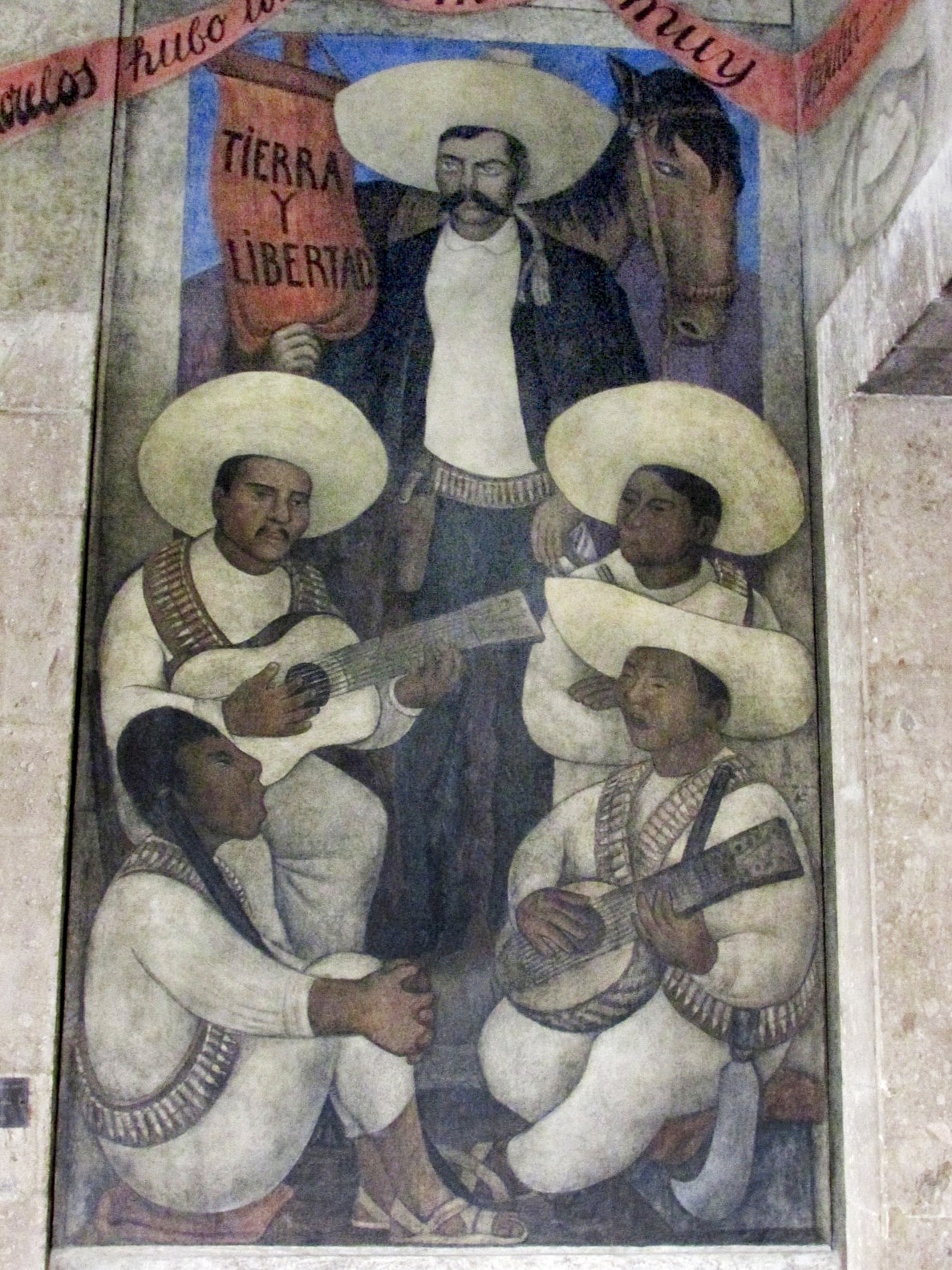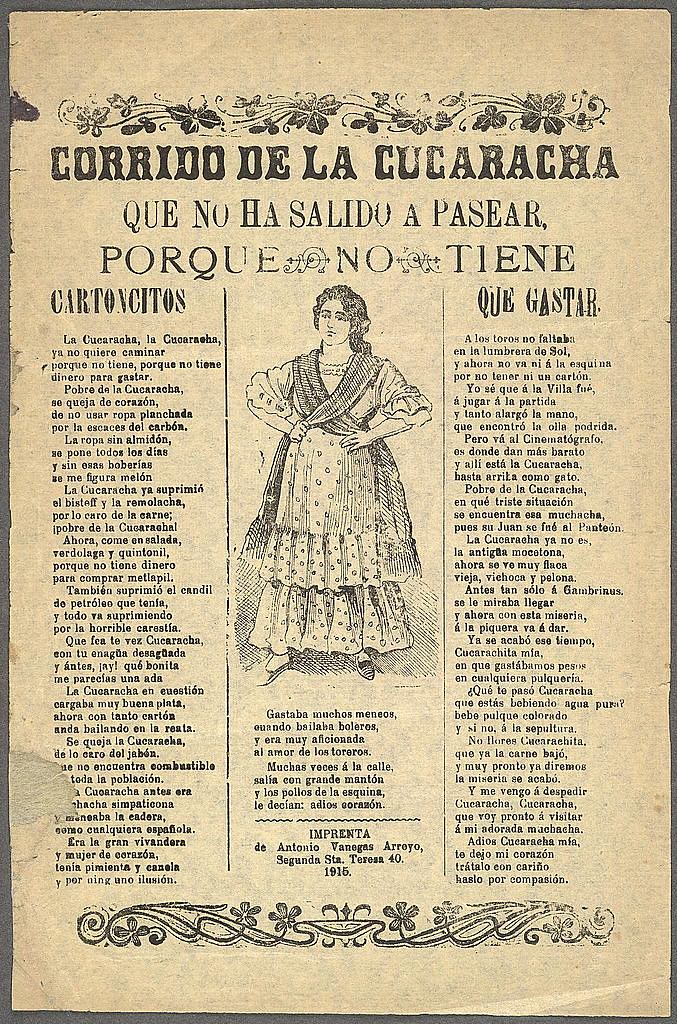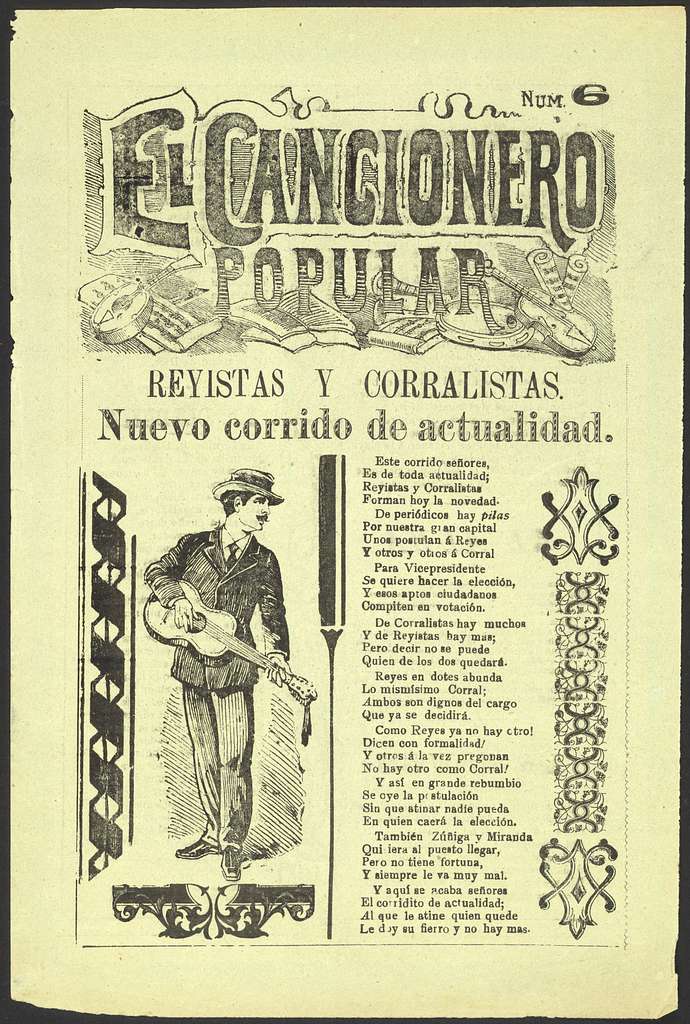Corrido: what it is, history, main characteristics, types of corrido and examples
Contents
What is a corrido?
In oral literature we find a great variety of formats through which the verbal experience has been taking place, one of them has been the corrido, a genre that has evolved in the American continent, especially in the Mexican territory. It is a type of oral literature that is created to recite, sing and even dance. However, this expression has a particularity and it is possible to find it in the form of a poem or in other formats such as song or ballad.

Another of the names by which the Mexican corrido is popularly known is tragedias mañanitas, verses or coplas. One of its most important characteristics is related to the subject matter, since corridos deal with topics such as politics, history, sentimental relationships, revenge, among others, even though in its beginnings it was focused on narrating the exploits and battles of the Mexican Revolution.
History of the corrido
It was a term used by Miguel de Cervantes Saavedra to refer to poems made to be sung, although it is also possible to trace the term in the dictionary of authorities in 1729. However, it is considered that it was born with the narratives that emerged after the Spanish invasion, whose root emerges to the Middle Ages in Spain with corridos that were mainly accompanied by string instruments.
After its arrival to the American territory, specifically in the south of Mexico, the corrido begins to echo, this time with the incorporation of other musical instruments such as the accordion, the bajo quinto, the drums, among others. From this moment on, the corrido began to narrate Mexican stories of the time, giving way to what is known today as the corrido norteño.
In its beginnings, the corrido was used as a means of information and education, but with the imminent social and political changes, it also reached a subversive purpose that appropriated the memorization of songs and oral transmission to begin to spread through media such as radio. Such was its evolution that soon, during processes such as the War of Independence, the Mexican Revolution and the Cristero War, the expression acquires an epic tone in which victories of revolutionary, popular and religious leaders, great deeds, losses, confrontations, among other events are recounted.
Its link with the oral tradition will continue to be very important, since it will fulfill an informative function through which it was easy to divulge historical facts through popular compositions that were spread in public spaces of the cities, such as squares, manifesting itself as a form of oral tradition.
Main characteristics of the corrido
Now, it is time to see the most important characteristics of this expression, which will allow us to observe its evolution and particular features to distinguish it from others that are part of the oral literature:
Thematic of the corridos
One of the most important aspects of this type of expression is that it can later be applied to a great variety of themes, in which it is also oriented to different functions, as we will see later on. However, the corrido is characterized by dealing with historical, political and social themes, among others that correspond mainly to its initial use during different social processes that took place at the time.
Social importance
During its peak, especially, which took place as we mentioned during warlike confrontations, the corrido will have a great importance within societies. In addition to its variety of initial intentions, the corrido, at this time, also implies and represents a set of elements that configure the cosmovision of the societies, which corresponds to the codes implemented at the time. However, at present the corrido has taken other paths, relating to confrontations between mafia cartels.
Flexibility of the corrido
Another feature of this expression is properly related to the composition and its oral implication, since it has given way to a great variety of manifestations that today are interpreted in musical genres not only of the Mexican territory, but at the same time they have been spreading in other zones and regions.
European influence
It is considered that corridos are a continuation of what Romance was initially, an expression of European origin. That is why the corrido will have an evolution based in great part on this manifestation that arrives to the territory after the Spanish invasion in which the natives begin to appropriate the format, this time to give life to their own needs and expressive intentions.
Expansion of the corrido
Nowadays it is possible to observe the important expansion of the corrido as an oral expression of the people. Although initially it is constructed in Mexico and also in the south of the United States, with the passage of time it was possible to know under the same term an expression that spread in other countries following similar intentions. However, later, after the adaptation and dissemination of the genre, it could occupy another series of objectives.

Types of corridos
According to the purpose of the corrido, it is possible to identify several types of corrido that have been developed since its emergence and that gave way to other manifestations with the passing of time. These types of corrido are presented below:
Identity corrido
This type of corrido takes place mainly during the Mexican Revolution, where the corrido was used to establish and exalt the identity of the soldiers who left for the confrontations. At this time the corrido was also implemented as a means of motivation for the opponents who were referred to in a distinctive way disqualifying the group of soldiers.
Corrido aleccionador
It is a type of corrido that is interested in moral formation. The corrido aleccionador is characterized by establishing a series of values which it describes through warnings, stories, advice, among others, and which are used to exemplify situations. It is a type of corrido that had a great impact on societies, since it also highlighted a series of worldviews, ideas and expectations in relation to the behavior of communities based on the codes of the time, as well as the context in which they were established.
Informative corrido
As its name indicates, it is a type of corrido that has the intention of informing a group of people about a determined fact or situation. In its beginnings, the informative corrido was directed to illiterate groups to inform them about the death of a recognized leader, events related to the country’s confrontations, the taking of a city, among others. In this way, the corrido informativo fulfilled its function as a means of communication in the same way as a newspaper could do later on.
Corrido for the formation of public opinion
In this case, the corrido was destined either to the exaltation of caudillos or to their discredit, given that at this time the formation of factions in which each party was in charge of promoting the knowledge and propaganda of those who were placed as leaders was decisive. Thus, the corrido was composed of victories, powers, virtues or defeats, disadvantages and more, about one or another caudillo.
Here it is necessary to make a parenthesis, because there are other types of corridos that, different from their function or objective, were identified mainly by the hero to whom they were dedicated or the theme. Accordingly, it is possible to identify the following:
Corridos villistas
This type of corridos talk about Pancho Villa, as well as his followers. Let’s remember that Pancho Villa, as he was mainly known, was one of the most important leaders of the Mexican Revolution and therefore a very well known leader. The corridos about him narrated the history and battles in which he participated, as well as highlighted the perspective of the revolution and the values for which they fought.
Zapatista Corridos
In this case, the corrido takes place in the collective memory highlighting the sentiment of the people of the south. It will be a type of corrido emerging from those who followed Emiliano Zapata, peasant and military leader of this same revolution, in which the themes were destined to express the demands and needs of the people. One of its main peculiarities has to do with the fact that they were corridos of partially schooled peasants who, although they neglected the form of the corrido to highlight the content, referred in their corridos mainly to freedom.
Other corridos
There are also other more recent corridos that were classified according to the specific themes they deal with. Many of them are called prison corridos, political corridos, alevosías, among others. Those corridos that tell stories that will be told by the people for themselves stand out.

Example of corrido
One of the best known and most distinguished corridos of this oral expression is the one titled “La Cucaracha”. However, it is a corrido of which several versions are known, a typical aspect of the oral tradition. One of the first known versions is presented below:
De las patillas de un moro
I have to make a broom,
to sweep the barracks
the Spanish infantry.
From the ribs of a Moor
I dare to form a bridge
so that Spain and her brave army
and its brave army
Undoubtedly the corrido has been one of the expressions with greater change throughout its evolution, giving life today to a great variety of formats that we can identify in the American continent in different regions. Remember that if you want to know more about other manifestations of oral literature, in our section you can find much more information to continue learning about this form of literature.
